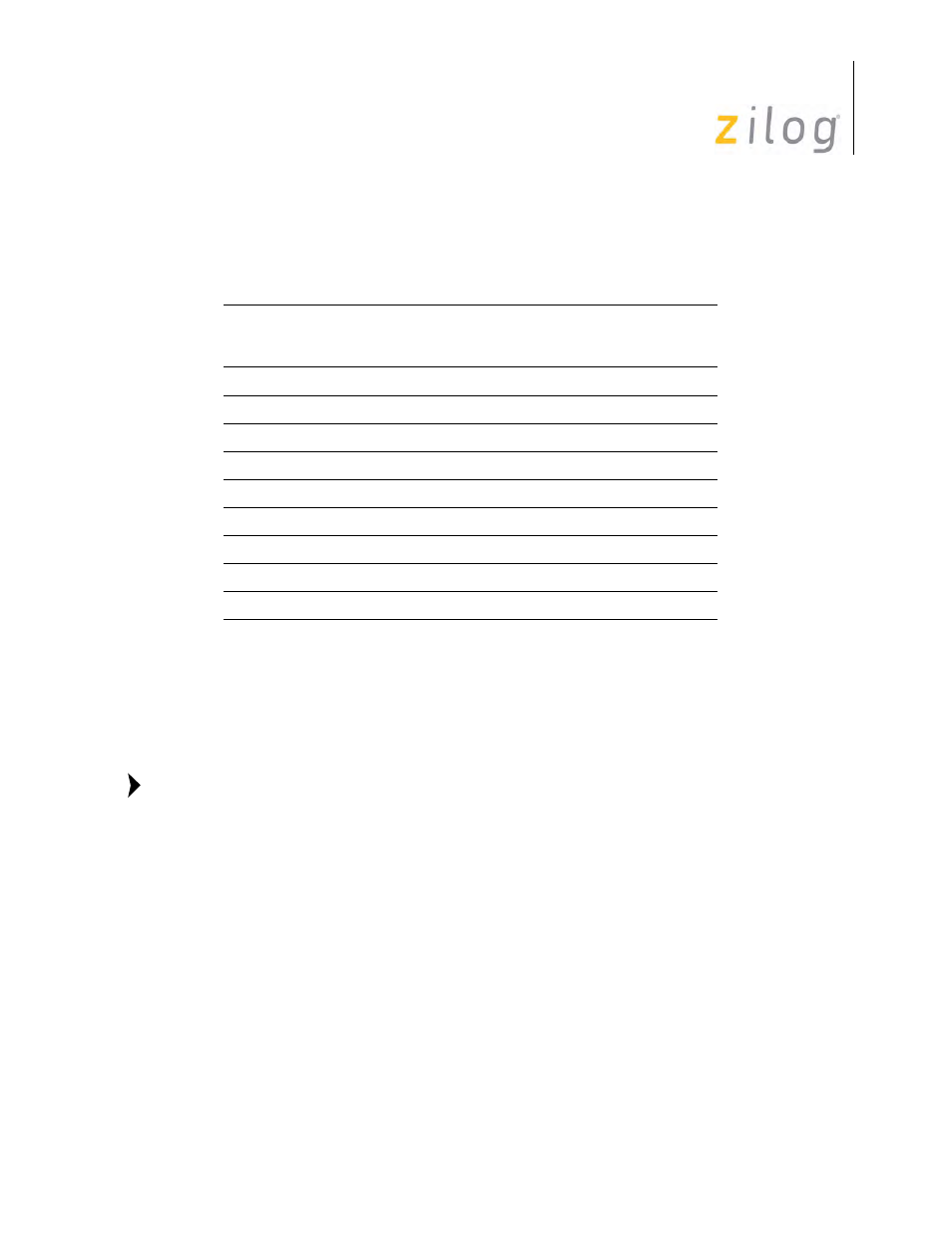Data encoding/decoding, Example in, Table – Zilog Z80230 User Manual
Page 81

SCC/ESCC
User Manual
UM010903-0515
SCC/ESCC Ancillary Support Circuitry
74
.
Other commonly used clock frequencies include 3.6846, 4.6080, 4.91520, 6.144, 7.3728, 9.216,
9.8304, 12.288, 14.7456, and 19.6608 (units in MHz).
Initializing the BRG is done in three steps. First, the time-constant is determined and loaded into
WR12 and WR13. Next, the processor must select the clock source for the BRG by setting bit D1
of WR14. Finally, the BRG is enabled by setting bit D0 of WR14 to 1.
The first write to WR14 is not necessary after a hardware reset if the clock source is the /
RTxC pin. This is because a hardware reset automatically selects the /RTxC pin as the BRG
clock source.
Data Encoding/Decoding
Data encoding is utilized to allow the transmission of clock and data information over the same
medium. This saves the need to transmit clock and data over separate medium as would normally
be required for synchronous data. The SCC provides four different data encoding methods,
selected by bits D6 and D5 in WR10. An example of these four encoding methods is displayed in
on page 75. Any encoding method is used in any X1 mode in the SCC, asynchronous or
Baud Rates for 2.4576 MHz Clock and 16x Clock Factor
Baud Rate
Time Constant
Decimal
Hex
38400
0
0000
19200
2
0002
9600
6
0006
4800
14
000E
2400
30
001E
1200
62
003E
600
126
007E
300
254
00FE
150
510
01FE
TC
2.4576 10
6
2 16
150
----------------------------------- 2
–
510
=
=
Note: